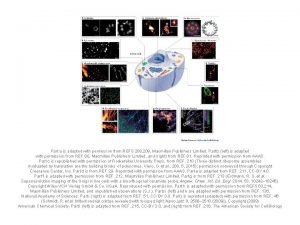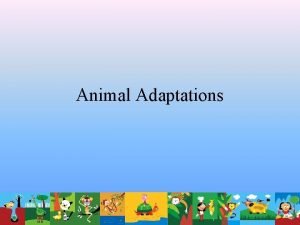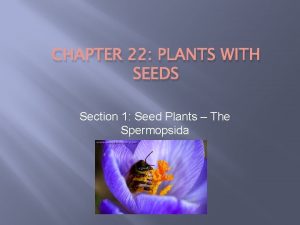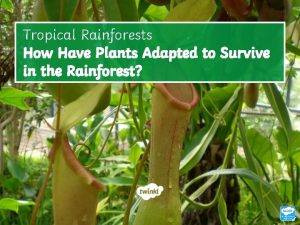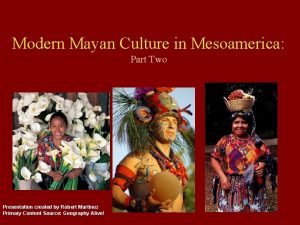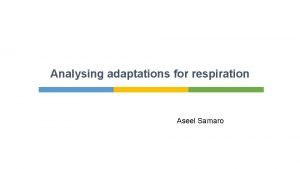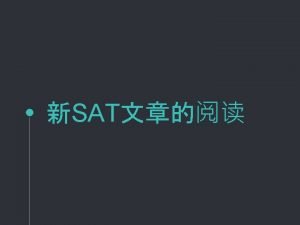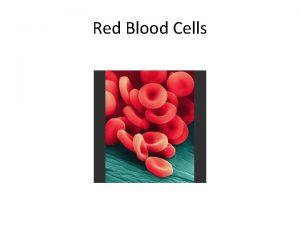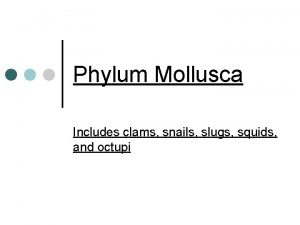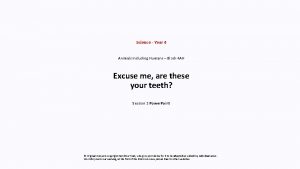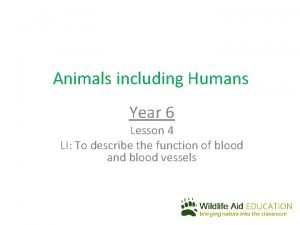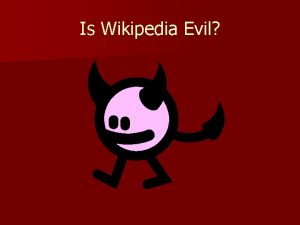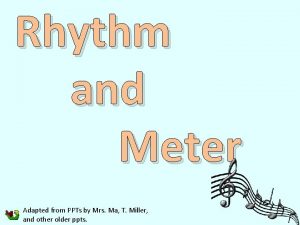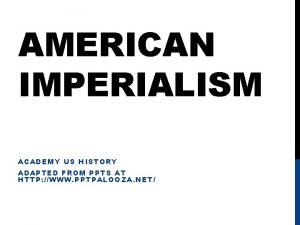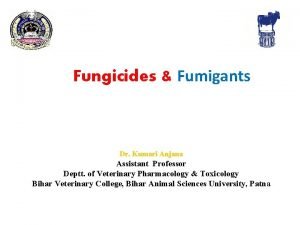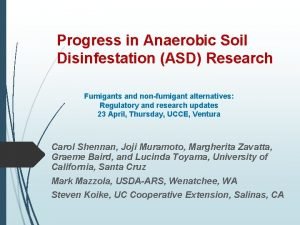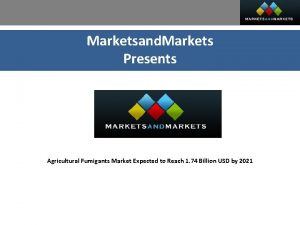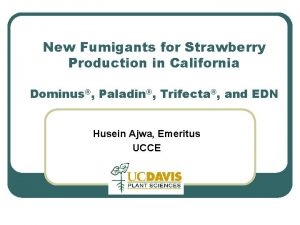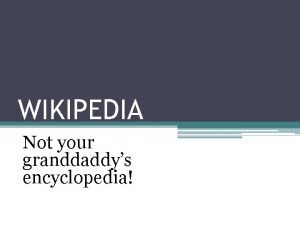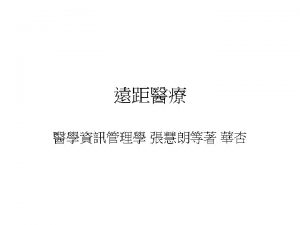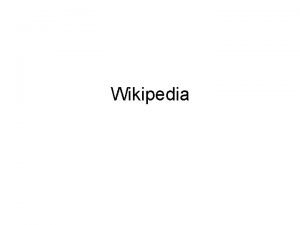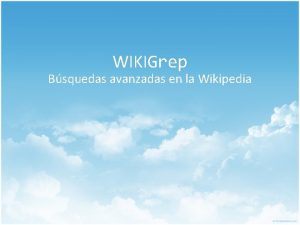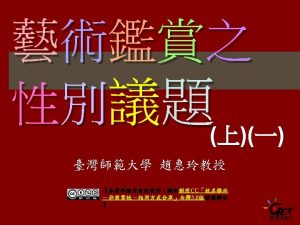FUMIGANTS ADAPTED FROM INTERNET SOURCES INCLUDING WIKIPEDIA PPTS































- Slides: 31

FUMIGANTS • • ADAPTED FROM INTERNET SOURCES INCLUDING WIKIPEDIA, PPTS, PDFS, BOOKS AND RESEARCH ARTICLES STUDENTS ARE ADVISED TO VISIT THE WEBSITE. WWW. FAO. ORG FOR MANUAL OF FUMIGATION FOR INSECT CONTROL











METHYL BROMIDE • Methyl bromide plays an important role in pest control in durables and perishables and particularly in quarantine treatments. • The Montreal Protocol, an international treaty developed to protect the earth from the detrimental effects of ozone depletion and signed by 175 countries, is now phasing out ozone depleting compounds including methyl bromide on a worldwide basis. • Accordingly, legislative changes have been made in different countries to control the use of methyl bromide, which has average ozone depleting potential of 0. 4. • The ban on methyl bromide currently exempts quarantine and pre-shipment (QPS), emergency uses and any critical uses (TEAP 2000). • Alternative fumigants Intensive research programmes on the development of substitutes for phosphine and methyl bromide are in progress in the developed and developing countries.

• At present phosphine and methyl bromide are the principal fumigants available for protecting stored products against insect and other pests. • The annual global usage of these fumigants on durables including food commodities and nonfood items like tobacco, timber and artifacts has been estimatedat more than 1900 and 8500 tonnes, respectively.

• Phosphine is available in solid preparation of aluminium or magnesium phosphide and in cylinders containing carbon dioxide ECO 2 FUME® or nitrogen FRISIN®. • Lately, on-site phosphine generators that can release the fumigant up to the rate of 5 kg h– 1 are available in some countries (Argentina, Chile, China and USA). • Metal phosphide formulations with slow or altered rates of phosphine release have been developed and tested in Australia and India (Rajendran, unpublished). • Improved application techniques such as “Closed Loop System” in USA, SIROFLO® and SIROCIRC® in Australia and PHYTO EXPLO® in Europe have been developed for application in different storage situations. • Insect resistance is a serious problem of concern that threatens the continued effective use of phosphine. • Phosphine fumigation protocols have been revised in different countries to tackle the problem of insect resistance to the fumigant. • Another problem with phosphine is that it corrodes copper and its alloys and therefore electrical and electronic items need protection from exposure to the fumigant.




CARBONYL SULFIDE • Australia has studied the fumigant properties of carbonyl sulfide, an industrial gas, and has taken a global patent on it. • Furthermore, older fumigants such as carbon disulfide, ethyl formate and hydrogen cyanide have been reconsidered for treating specific commodities. • In the UK, methyl phosphine has been studied for controlling phosphine resistant grain insect pests. • Sulfuryl fluoride, which has been used as a structural fumigant for drywood termite control for the past 40 years, has been investigated for treating stored food commodities in China, Germany, UK and USA.

SULFURYL FLUORIDE • • Sulfuryl fluoride has potential application in disinfesting flour mills and food factories (Bell et al. , 1999). Recent studies indicate that the fumigant can be effectively used for insect pest control in dry tree nuts and food grains. The fumigant has vapour pressure nearly ten times higher (13, 442 mm of Hg at 25ºC) than that of methyl bromide. Therefore it is more penetrative into treated commodities than methyl bromide. It is 3. 7 times heavier than air Insect eggs are the most tolerant stage for sulfuryl fluoride. However recent investigations have established that the relative egg intolerance can be overcome by increasing the exposure period and by raising the treatment temperature (Bell et al. , 1999). Sulfuryl fluoride has been registered and used as a structural fumigant in Germany, Sweden and USA. Sulfuryl fluoride is available under the trade name “Vikane” containing 99. 8% sulfuryl fluoride and 0. 2% inert materials. Apart from the USA, China has been producing sulfuryl fluoride (trade name “Xunmiejin”) since 1983 (Guogan et al. , 1999). Laboratory and smallscale fumigation experiments in China revealed that it requires about 30– 50 g m– 3 dosage with 24 to 48 h exposure period for insect control in various stored products. Also, sulfuryl fluoride can be applied under reduced pressure so that the exposure period can be drastically reduced (Zettler and Arthur, 2000). Several species of stored product insects were controlled at dosages ranging 60– 90 g m– 3 applied under reduced pressure of 99, 750 to 94, 430 Pascals (27– 29 inches of Hg) in 3 h. Therefore it is likely that sulfuryl fluoride will play a significant role in quarantine treatment of food commodities in the near future. The fumigant was noted as highly toxic to diapausing larvae of codling moth, Cydia pomonella in stored walnuts

CARBON DISULFIDE • Carbon disulfide, an old fumigant, is used at farm level in some parts of Australia and to a limited extent in China (TEAP 2000). • The fumigant is not carcinogenic and has no adverse effect on the environment. • The major advantage of carbon disulfide is its small effect on seed germination. • However residues of carbon disulfide persist in treated commodities for a longer period than that of other fumigants (Haritos et al. , 1999). • Some of the limitations of the fumigant include high flammability, longer exposure period, persistence in treated commodity, lack of residue limits of Codex Alimentarius and high human toxicity.

ETHYL FORMATE • Ethyl formate, a known solvent, is used as a flavoring agent in the food industry. • It is naturally present in certain fruits, wine and honey. In India, extensive laboratory tests against insect pests of food commodities and field trials on bagged cereals, spices, pulses, dry fruits and oilcakes have been carried out on the fumigant (Muthu et al. , 1984). • Effective commodity dosage ranged from 300 to 400 g m– 3 with 72 h exposure period. • Currently ethyl formate is being used for the protection of dried fruits in Australia. • It has been found suitable for in-package treatment of dried fruits. • Studies in Australia indicate that, unlike phosphine, ethyl formate is rapidly toxic to storage insects including psocids (Annis and Graver, 2000).

• Propylene oxide, a colorless and flammable ethereal liquid, is used for/as food emulsifier, surfactants, cosmetics and starch modifier. • It is registered and used in the USA as a sterilant for commodities such as spices, cocoa powder and nutmeats (Griffith and Warren, 2000). • It was also used in USA for insect control until 1988 when registration lapsed. • The EPA has classified the compound as Group B 2 probable human carcinogen. Its TLV-TWA (threshold limit valuetime-weighted average concentration) is 20 ppm. • It has been claimed that propylene oxide can be effective against insect pests when commodities are treated under vacuum.

CARBONYL SULFIDE • Research work on carbonyl sulfide in Australia, Germany and the USA reveal that egg stage is highly tolerant to the fumigant, the effective exposure period is half that of phosphine and it is effective against insects and mites at ≥ 5ºC. • Carbonyl sulfide is naturally present at low levels in food grains, vegetables (Brassica spp. ) and cheese. • Reports from Australia indicate that the fumigant does not affect the quality of wheat, sorption is less and germination is not affected following exposure to dosages ranging from 12 to 125 g m– 3 for 24 h. • Xianchang et al. (1999) reported that carbonyl sulfide affects germination of cereals except sorghum and barley and imparts off-odour following treatment at 50 to 500 g m– 3 for 7 days. • Bread made from wheat that was fumigated at 50 -200 g m– 3 (and aerated for 180 days) was tainted. Milled rice after treatment of paddy rice with carbonyl sulfide at the above dosages had undesirable odour. • Change in colour was also observed in fumigated soybean. • Zettler et al. (1999) also noticed off-odour during the first 24 h of aeration in walnuts that were fumigated with carbonyl sulfide at 24 -56 g m– 3 for 24 h.

• Hydrogen sulfide can also be produced via metabolic breakdown during the treatment period. • Ozone, a known sterilant, can be used as an insect control agent in food commodities at levels less than 45 ppm. • Ozone is readily generated from atmospheric oxygen and is safe to the environment when used for fumigation. • However it is highly unstable and breaks down to molecular oxygen quickly. • A major disadvantage with ozone is its corrosive property towards most of the metals (Mason et al. , 1999). • Preliminary studies showed that grain (corn) quality is not affected by ozone treatment (website, 2001).







• THANKS
 Adapted from the internet
Adapted from the internet Water management importance
Water management importance Print sources of information
Print sources of information Finding reliable internet sources
Finding reliable internet sources Birds in the chaparral biome have adapted to living
Birds in the chaparral biome have adapted to living Gallant
Gallant Adapted with permission from
Adapted with permission from Behavioral adaptations of zebras
Behavioral adaptations of zebras Structural adaptation of camel
Structural adaptation of camel Spermopsida
Spermopsida How have plants adapted to the rainforest
How have plants adapted to the rainforest In what ways have the highland maya adapted to modern life?
In what ways have the highland maya adapted to modern life? Sausage shaped organelles
Sausage shaped organelles This passage is adapted from jane austen
This passage is adapted from jane austen The outsiders adapted for struggling readers
The outsiders adapted for struggling readers Xerophytic plants diagram
Xerophytic plants diagram Best brother quotes
Best brother quotes Red blood cells are
Red blood cells are In conclusion synoynm
In conclusion synoynm Grta6
Grta6 Internet technology wikipedia
Internet technology wikipedia What is internet
What is internet Invertebrates including snails slugs and mussels
Invertebrates including snails slugs and mussels The mutcd recommends the use of emergency vehicles
The mutcd recommends the use of emergency vehicles How many vertices does a rectangular prism have
How many vertices does a rectangular prism have Animals including humans year 4
Animals including humans year 4 Printed words including dialogue
Printed words including dialogue Animals including humans year 6
Animals including humans year 6 Including samuel discussion questions
Including samuel discussion questions It encompasses several different aspects, including
It encompasses several different aspects, including Either my shoes or your coat (is/are) always on the floor
Either my shoes or your coat (is/are) always on the floor Animals including humans
Animals including humans






